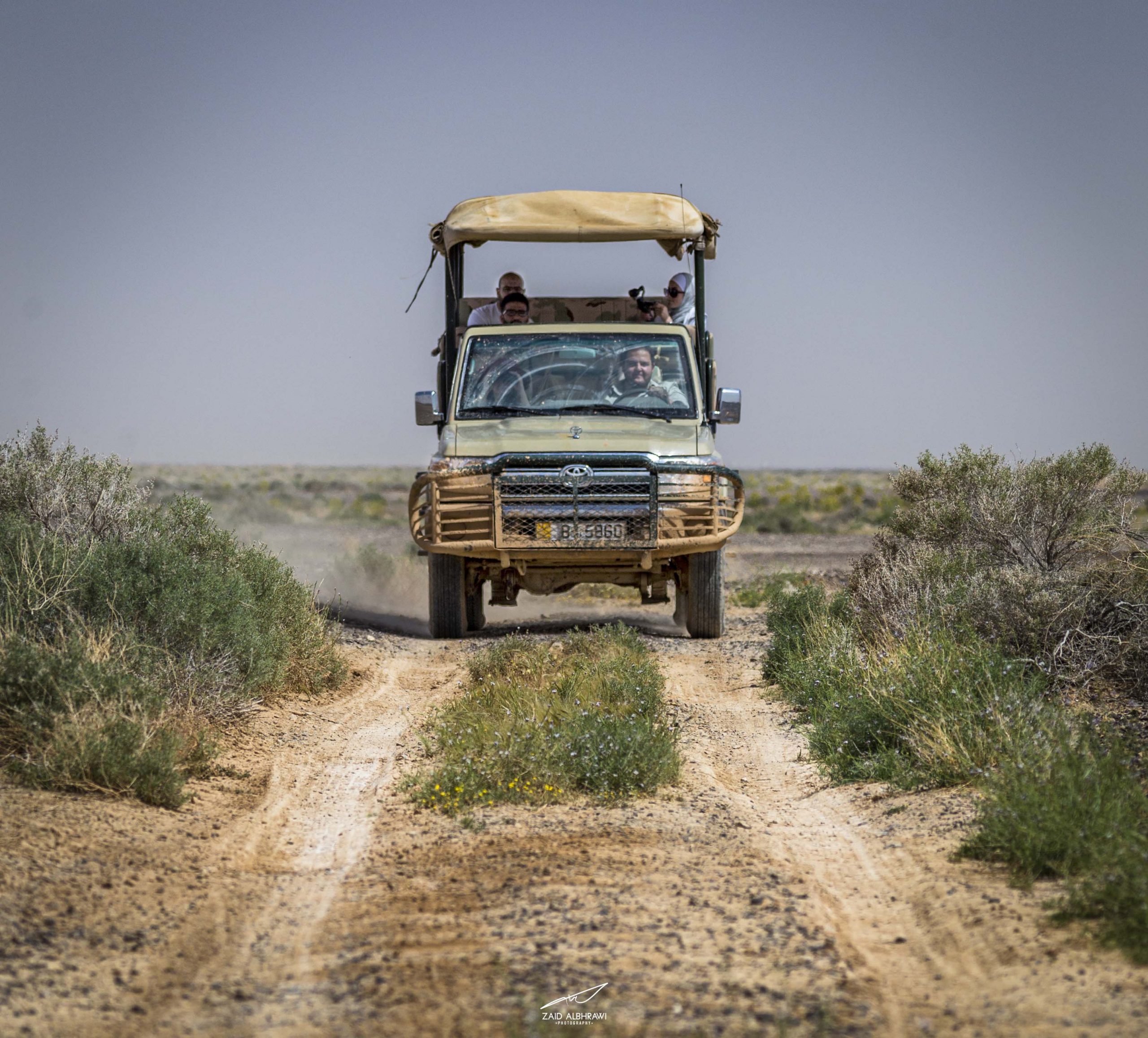SHAUMARI WILDLIFE RESERVE
Shaumari Wildlife Reserve was established in 1975 by the Royal Society for the Conservation of Nature as a breeding center for endangered or locally extinct wildlife.
Today, following breeding programs with some of the world’s leading wildlife parks and zoos
this small, 22-square-kilometre reserve is a thriving protected environment for some of the most rare species of animals in the Middle East.
Oryx, ostriches, onagers (an Asian wild ass) and gazelles, which are depicted on many local 6th century Byzantine mosaics
are rebuilding their populations and reasserting their presence in this safe haven
protected from hunting and habitat destruction that nearly wiped them out.
The Oryx and onagers can often be seen roaming freely in their large desert grassland enclosure
and gazelles can be observed in their own fenced areas.
Shaumari’s breeding enclosures provide a small “zoo” for visitors, making the reserve a popular spot for children and school outings.
The Arabian Oryx’s Story in Shaumari Wildlife Reserve

The Arabian Oryx, an elegant white antelope, is one of the few mammals indigenous to the Arabian Peninsula.
It became extinct in Jordan around the 1920s, as a result of the increased hunting for its meat, coat and horns.
The increasing range and power of rifles compounded by the factor of motorized vehicles were the key to the extinction of the Oryx.
The last known wild Arabian Oryx in the world was killed by hunters in Oman in 1972.
Fortunately, previous to this incident, in 1962, the Flora and Fauna Preservation Society and the World Wildlife
Fund had launched an international rescue effort known as Operation Oryx.
A world survival herd was established in the USA, with three animals from Oman
one from the London zoo, one from Kuwait, and four from Saudi Arabia.
This herd increased steadily in numbers,
and the Royal Society for the Conservation of Nature proposed that the Arabian Oryx should be reintroduced into its native habitat in the deserts of the Arabian Peninsula.
In 1978, eleven Arabian Oryx were relocated in Shaumari.
The number of Oryx has now increased to a phenomenal two hundred! Operation Oryx has been so successful that Jordan now supplies Oryx to other countries,
which are conducting reintroduction programs.
Oryx Safari Tour:
Guided only
Time:
3 – 4 hours
Altitude:
520 meters above sea level
Group size:
7 persons per car
Description:
Your professional nature guide will meet you at the gate to the Shaumari Wildlife Reserve in converted Land Cruiser safari vehicles.
The tour begins with a brief about the reserve and what to expect on your journey through the desert.
Midway through the safari, you will stop for a picnic and enjoy a hot cup of tea while taking in the beautiful semi-desert landscape of Shaumari.
The reserve is an amazing place where you will learn about Shaumari’s unusual desert habitats and conservation history.
Oryx Safari Trail brings you close to one of the region’s most magnificent (and endangered) wild animals: the Arabian Oryx.
This large white antelope, with its long, pointed horns, is an icon of Arabia and is thought to be the origin of the mythical unicorn.
While touring Shaumari, you may also see the Persian Onager, another critically endangered species breeding successfully in the reserve.
While we cannot guarantee that you will see any big animals on your trip
you will experience the special character of the Eastern Desert, with its surprising variety of vegetation and subtle colors.
During your tour, you will learn the basic principles of animal tracking and practice reading tracks.
Your guide will also provide an overview of the reserve’s vegetation, pointing out different kinds of native plants and herbs and their uses.
In addition to the safari, guests will also see falconry displays and the Oryx breeding enclosure.


